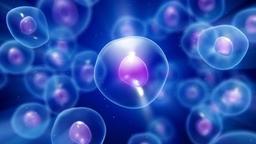
FLASHBACK FRIDAY cells/viruses/cell transport/biomolecules
Quiz by Renee Delgado
High School
Biology(2017)(ARCHIVED)
Texas Essential Knowledge and Skills (TEKS)
Feel free to use or edit a copy
includes Teacher and Student dashboards
Measure skillsfrom any curriculum
Measure skills
from any curriculum
Tag the questions with any skills you have. Your dashboard will track each student's mastery of each skill.
With a free account, teachers can
- edit the questions
- save a copy for later
- start a class game
- automatically assign follow-up activities based on students’ scores
- assign as homework
- share a link with colleagues
- print as a bubble sheet
20 questions
Show answers
- Q1Which structure can be found in both eukaryotic and prokaryotic cells?NucleusCytoplasmMitochondrionChloroplast45s
- Q2Which of the following is a defining characteristic of a Eukaryotic cell?The method of movementPresence of a membrane-bound nucleusThe composition of the cell membraneThe method of cellular respiration45s
- Q3Identify the Venn diagram section(s) which include(s) PROKARYOTIC cells.I, IIIVII, II, III, IV30s
- Q4What additional characteristic (X) belongs in the central section of the above Venn diagram?Golgi BodyRibosomePlasma membraneMitochondrion45s
- Q5What type of cell is described below?Animal CellPlant cellBacterial CellVirus45s
- Q6Which of the following best explains the process illustrated?Movement of molecules against a concentration gradient expending energyTransport down the concentration gradient by means of a carrier moleculeSeparation of suspended particles from a fluid environment through a porous membranePassage of water molecules through a semi-permeable membrane to equalize concentration60s
- Q7What best describes the transport process occurring in the model?Sodium ions are moving from low concentration to high concentration by using energy.Sodium ions are moving from high concentration to low concentration without using energySodium ions are moving from low concentration to high concentration without using energy.Energy is used to move sodium ions from high concentration to low concentration.60s
- Q8Which of the following DOES NOT describe osmosis?Water moves across the cell membrane from the side with high osmotic pressure towards the side with low osmotic pressure.Passive transport without the use of proteins to facilitate the passage of molecules.Oxygen transfers into red blood cells through small gaps in the cell membrane from the oxygen-rich environment surrounding the cells.Molecules that are transported in and out of a cell without the use of energy.60s
- Q9Which student(s) gave an accurate statement regarding cellular transport?Students 1 and 2Students 2, 3, and 4Student 1 onlyStudents 1, 2, and 445s
- Q10Due to environmental changes, the water concentration outside of a cell becomes higher than the water concentration inside of the cell. How would the cell most likely respond to maintain homeostasis?Cell would move water in and out.The cell would increase the production of salt.The cell would fill with water.The cell would release water.45s
- Q11Observe the virus and cell pictures. Each has projections that extend beyond the main structure. How are these projections used differently in viruses and protists?Viruses use projections to move throughout their host while protists use projections to attach to other cells.Viruses use projections to allow substances to pass through the main structure while protists use projections for protection.Viruses use projections to attach to cells while protists use projections to move through their environment.Viruses use projections to defend against the immune system while protists use projections to eat.60s
- Q12Which of the following are not virusesIII, III, IVIII, IVII, IV. V45s
- Q13Norovirus outbreaks have caused many schools to close. Norovirus causes extreme vomiting within as little of 12 hours of exposure. The virus is spread in the air as infected individuals vomit. Based on this information, which reproductive cycle does norovirus most likely undergo?MitosisLytic cycleMeiosisLysogenic cycle60s
- Q14What structure is most likely NOT found in both viruses and cells?DNANucleusProteinRNA45s
- Q15What event would indicate that a virus undergoes the lysogenic cycle?The virus reproduces quickly, causing symptoms to arise shortly after infection.The virus uses projections to attach to specific cells before injecting nucleic acid.The virus lyse the cell to release new viruses and infect other healthy cells.The virus stays dormant for a period of time before starting to reproduce.45s